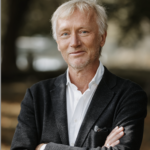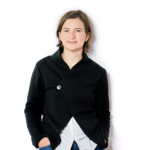Prof. Nina Juric
The world of audiovisual media becomes more and more complex. One can find innumerous HD TV-screens in media shops, interactive game platforms are part of children’s rooms, videos starring cats go viral via virtual airwaves, the pulsing terms like “web”, “networking”, “interactions” are integral parts of our lives.
In the past years, one could acknowledge an increasing digitization of our world by smart phones, apps, interactive windows and multimedia channels. No doubt, a growing attention and sensitivity to media, new technologies and design, and to film, images, and the term of “motion” exists.
Advertising movies, viral campaigns, and music videos can be easily grasped, but terms such as “motion design, soundscapes, video mapping, type´n´motion, motion capturing or augmented reality” are less common and hereby associated with some uncharted territory.
All these formats, products, terms, and characteristics of “communication design in motion” are captured in the particular realm of “Image & Motion”.
Here, the overall topic is the analysis, the comprehension and creating of the complexity which is generated by the scope of contemporary audiovisual design possibilities. Integral parts of it are discovery, impact, failure, play and experiment, risk, courage – the known and unknown.
“Motion” represents movement attended by rhythm, dynamics, tempo, pace. Linked to physics, object, subject, body and sound we negotiate all of that within a timeline.
“Image” is not only surrogating the visual picture, its creative leeway and impact, but also means the product itself, the function of an understood or misunderstood image, it represents the level of information and the spatial context in which perception takes place. It is in this sense performing. Trueness vs. fiction. Hi Definition vs. Hi Soul. Trace vs. Pace.
“Image & Motion” features three distinct areas, firstly, “Timebased Media: Image & Space”, secondly, “Function: Motion Design”, thirdly, “Context: Observation and Innovation”, with a focus on interdisciplinary approaches.















